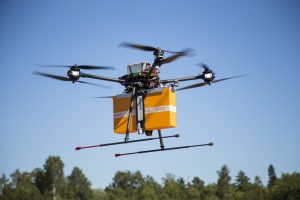Could a new app be a taste of the way our industry uses technology in the future?
Brussels airport has already had a great deal of success with its BRUcloud open community platform in recent years – and it seems that freight forwarders at the airport are now embracing the cutting edge data-sharing technology to develop new solutions to old problems.
Industry backing
The Customs Export Application was strongly supported by Air Cargo Belgium (ACB) – who represent the country’s air cargo community – and with the advantages it delivers it’s clear to see why the technology has been given the industry body’s backing. The app matches collected manifest data (both from the freight forwarders themselves and existing data that is available within the BRUcloud system) and then automatically reports complete and accurate information to customs. The new technology saves time on all sides – particularly in terms of the amount of time processing air waybills. Customs have also agreed to clear shipments handled via the app first, providing yet another opportunity to speed up processes for all stakeholders.
A shared approach
A real key to the success of the app has been the collaborative approach taken by all parties – both in terms of the development of the Customs Export Application and its subsequent roll out.
“This collaboratively created app results in a lower administrative burden for all the parties,” says Bart Vleugels, who is advisory general at the Federal Public Service of Finance, Customs and Excise Duties. “Digitization within BRUcargo will further lower the chances of errors and will help to drastically decrease lead times.”
Freight forwarders have certainly bought in to the new technology, with 90 per cent of the air freight passing through BRUcargo now using the app.
Industry best practice
Ignazio Coraci comments: “The industry can learn a huge amount from the great work done at BRUcargo, not just in terms of the technology itself and its application, but also in the collaborative approach taken to its development by everyone involved. This kind of open cooperation between stakeholders is a model for similar projects.”





